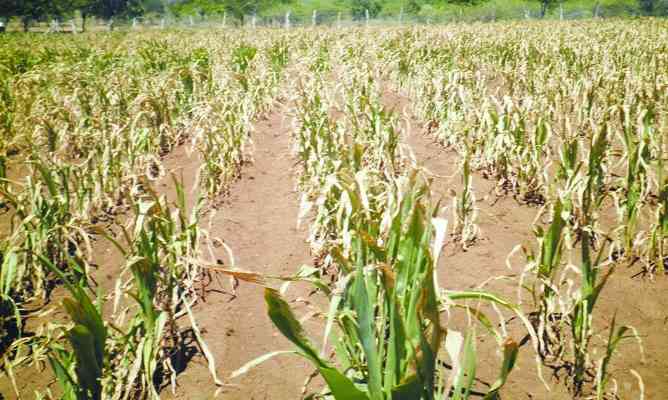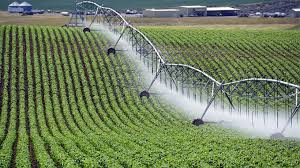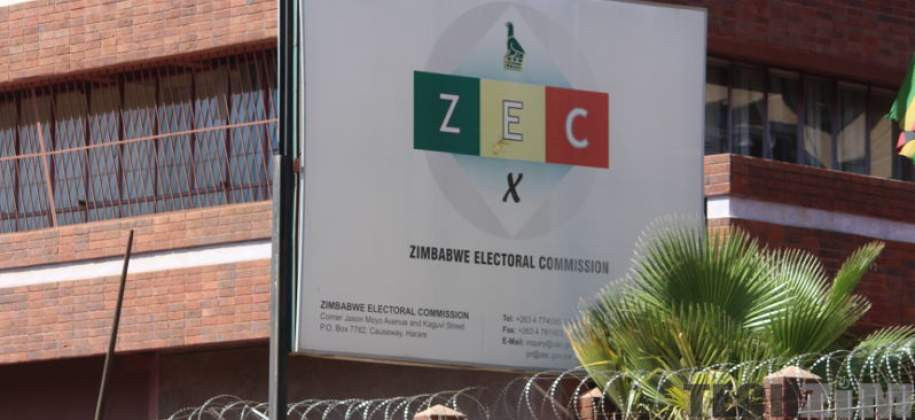
ZIMBABWE'S current dire shortage of maize has forced the country to consider importing genetically modified (GMO) maize, despite its previous ban on the cultivation and sale of GM crops.
The decision to import GMO maize is driven by the urgent need to avert an impending famine and ensure food security for its population.
While GMO maize holds the potential to address the immediate challenges posed by the shortage, it also raises important debates and concerns surrounding the advantages and disadvantages of genetically modified organisms.
GMO maize offers advantages, such as increased crop yield, improved nutritional content, and reduced environmental impact through targeted weed control.
However, critics raise concerns about potential health risks, environmental impacts, and socioeconomic implications.
As Zimbabwe tackles this complex issue, it must carefully consider the long-term sustainability, ethical considerations, and the interests of farmers and consumers to make informed decisions that promote both food security and the overall well-being of its population.
In response to the perilous situation, Zimbabwean officials have acknowledged the need to import genetically modified (GM) maize this year to mitigate what could potentially be one of the worst famines in history.
However, concerns arise regarding the potential health implications for citizens due to the consumption of GM maize.
- Mavhunga puts DeMbare into Chibuku quarterfinals
- Bulls to charge into Zimbabwe gold stocks
- Ndiraya concerned as goals dry up
- Letters: How solar power is transforming African farms
Keep Reading
Although Zimbabwe has previously banned the cultivation and sale of GM crops, proponents argue that the government should reconsider its stance and embrace the cultivation of such crops, given the recurring droughts and climate change-related challenges.
This year's maize harvest is projected to plummet by more than half, forcing authorities to depend heavily on imports to bridge the deficit.
The main challenge lies in the anticipated poor yields resulting from dry conditions in certain regions, despite increased planting areas compared to the 2022/23 season.
The excessive heat and low rainfall across South Africa pose significant concerns for farmers, particularly in regions dedicated to summer grains and oilseed production.
The 2023/24 summer crop season initially showed promise with favourable early-season rains, defying expectations for an El Niño season characterised by drier weather conditions.
These early rains fostered optimism for a decent harvest in the 2023/24 production season.
However, the current view has shifted, and fears of poor harvests persist if widespread rain fails to materialise during the final days of February and the first week of March.
According to official sources, Zimbabwe's maize harvest is anticipated to plummet by a staggering 70% compared to the previous season, as the devastating effects of drought wreak havoc on crops, as reported by the Ministry of Agriculture.
An outlook report from the Ministry projects a meagre maize production of approximately 696 116 tonnes, a steep decline from the estimated 2,3 million tonnes predicted for 2023.
Intriguingly, Zimbabwe's self-sufficiency level in maize production is even lower than the surplus held by South Africa. South Africa is the only country in Southern with a maize produce surplus.
This forthcoming harvest is poised to be the smallest since 2016 when Zimbabwe managed to produce a mere 512 000 tonnes.
A recent government report revealed that maize cultivation area diminished by 12% this season, as farmers planted fewer crops.
Consequently, the severity of this situation has caused the number of food-insecure individuals to soar, surpassing three million people, a significant percentage when compared to Zimbabwe's total population of 16 million.
Further investigation by Equity Axis Research sheds light on the matter, unveiling a monthly decrease in maize imports from US$49 million to US$42 million, based on the latest trade data for January.
Furthermore, the average imports over the past six months amounted to US$23 million.
While the monthly reduction is evident, the comparison against the average import level indicates the severity of the situation.
Moreover, concerns are mounting over the dry weather conditions, which pose a threat to maize harvests in South Africa, Zambia, and Zimbabwe, the prominent maize producers in southern Africa.
Zambia, the region's second-largest maize producer after South Africa, has already declared a drought disaster, intensifying pressure on South Africa to supply maize to neighbouring countries.
Zambia represents Zimbabwe's primary competitor in terms of maize imports.
South Africa's production forecasts also paint a challenging picture.
The Crop Estimate Committee projects a decline in South Africa's 2023/24 white and yellow maize harvest to 7,6 million tonnes (down 17% YoY) and 7,3 million tonnes (down 8% YoY), respectively.
Consequently, the overall maize production estimate hovers around 14,9 million tonnes, marking a 13% YoY decrease.
Although significantly lower than the previous season, this expected maize harvest would still fulfil South Africa's annual maize consumption of approximately 12 million tonnes, enabling the country to remain a net exporter, albeit with a considerably reduced volume compared to previous years.
Approximately 2,9 million tonnes of maize would be available for export, disregarding the amount South Africa needs to store in their silos as a precautionary measure.
The plight of Zimbabwe's maize situation is dire, marred by drought-induced devastation and declining agricultural output.
With a drastic reduction in maize production, increased food insecurity, and diminished maize imports, the country faces a formidable challenge.
The effects are further compounded by the precarious conditions in South Africa and Zambia, which heighten the pressure on regional maize supplies.
Urgent measures are needed to address this crisis and ensure food security for Zimbabwe's population.
In addition to the challenges faced by Zimbabwe and Zambia, neighbouring countries like Botswana and Lesotho are also grappling with drought concerns, further exacerbating the maize import situation in the region.
The majority of South Africa's maize exports are directed towards Zimbabwe, with the remaining balance distributed among other neighbouring African countries.
These figures position South Africa's projected maize exports for the 2023/24 season at 2,9 million tonnes, out of the overall seasonal export forecast of 3,3 million tonnes.
According to reports, the Grain Marketing Board in Zimbabwe currently holds 145 604 tonnes of maize, 43 964 tonnes of traditional grains, and 244 705 tonnes of wheat.
To meet the country's food requirements, Zimbabwe needs 1,8 million tonnes of maize for human consumption and an additional 400 000-500 000 tonnes for livestock feed.
Consequently, the government aims to bridge the gap of 318 723 tonnes, while the private sector is permitted to import as much as needed.
Taking into account maize, traditional grains, and wheat, the strategic grain reserve amounts to 434 293 tonnes, excluding the 25 000-tonne donation from Russia to the President.
In terms of regional production, last year, Mashonaland West and Mashonaland East were the leading maize-producing provinces.
However, this year, these traditionally robust farming regions faced the impact of low rainfall.
On the other hand, the assessment indicates that the Midlands province is expected to yield the highest harvest. Mashonaland West's production projection stands at 290 005 tonnes, down from 523 023 tonnes last year, while Mashonaland East is expected to yield 225 675 tonnes compared to 415 574 tonnes the previous year.
The Midlands province is projected to produce 381 056 tonnes, as opposed to 414 249 tonnes in 2023. Mashonaland Central's projection is 207 966 tonnes, a decrease from 342 249 tonnes.
Among the hardest-hit provinces is Matabeleland North, where maize cultivation areas saw a 30% decline.
The province is anticipated to produce 95 726 tonnes this year, following a better-than-expected performance of 82 739 tonnes last year.
In conclusion, the maize crisis in Southern Africa paints a distressing picture, marked by drought-induced challenges, heavy reliance on imports, and uncertain harvest prospects.
The situation calls for urgent action to address food security concerns and mitigate the potential impact on the health and well-being of affected populations.
Collaborative efforts and innovative solutions are critical to navigating the difficult path ahead and ensuring long-term resilience in the face of climate change and its associated consequences.
- Equity Axis is a financial media firm offering business intelligence, economic and equity research. The article was first published in its latest weekly newsletter, The Axis.











